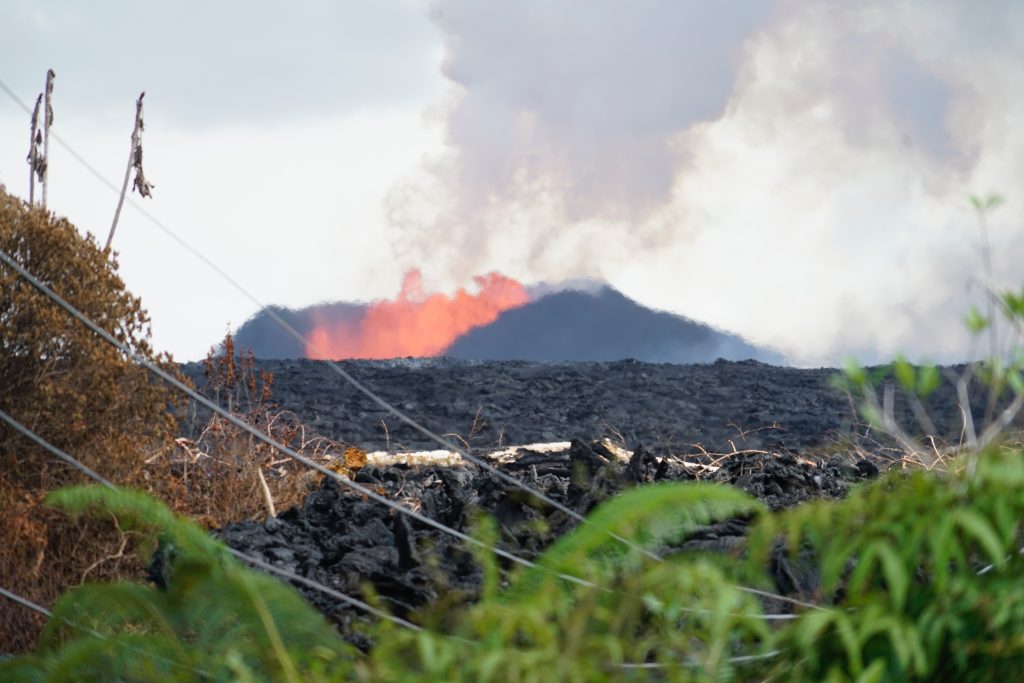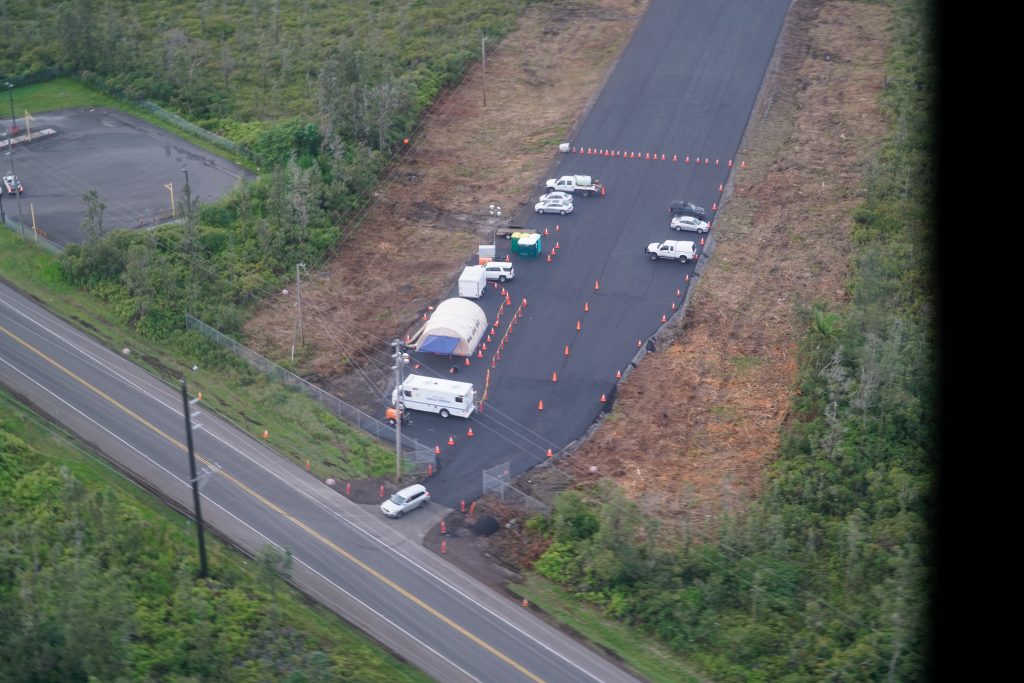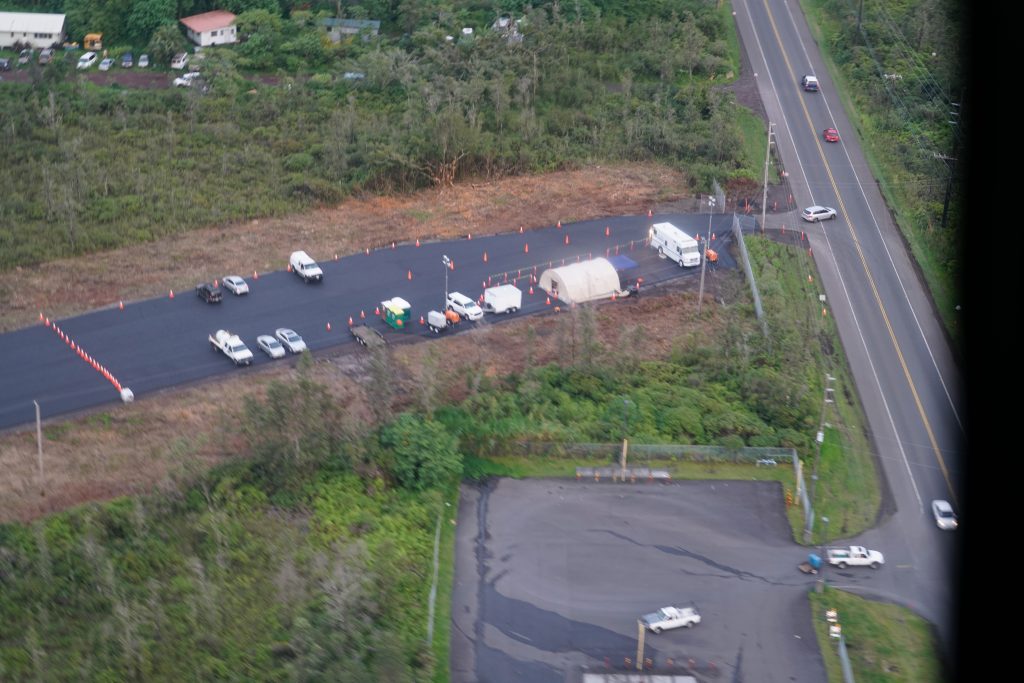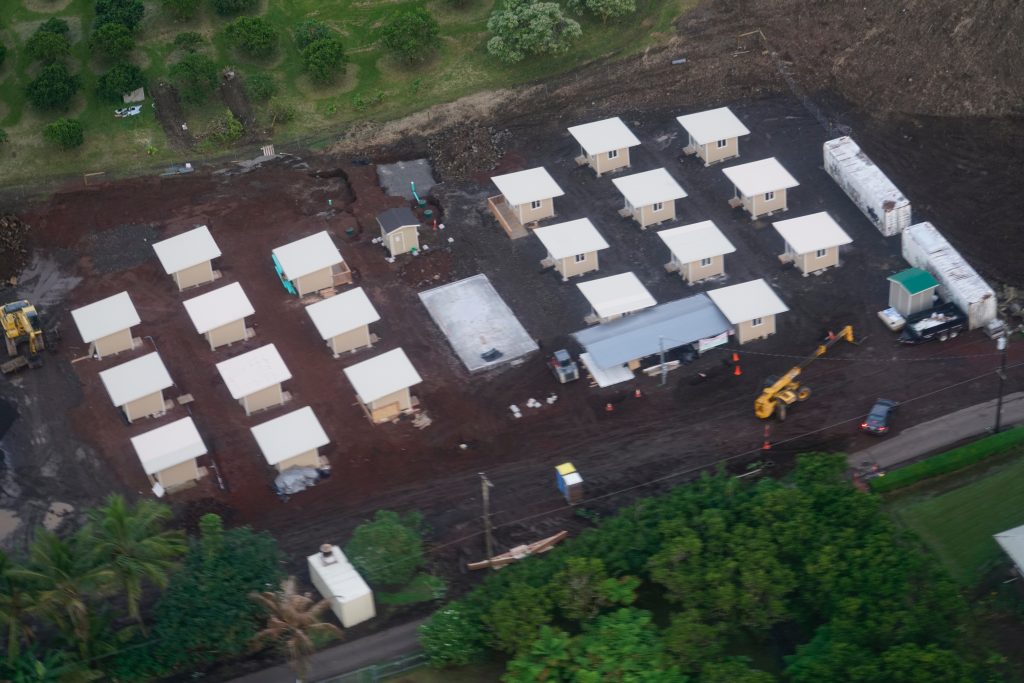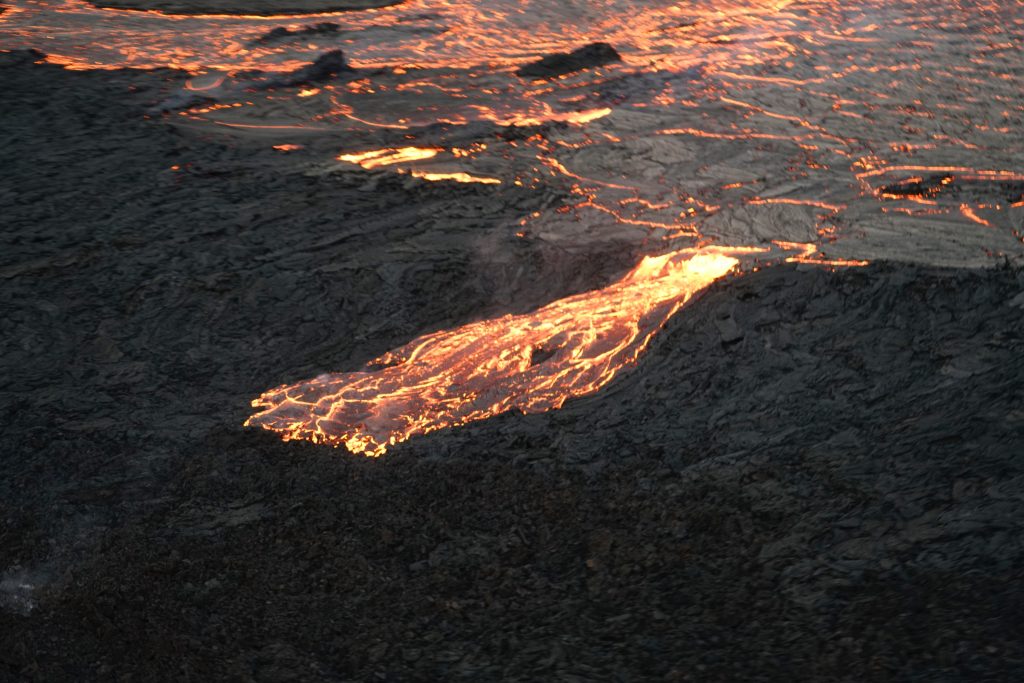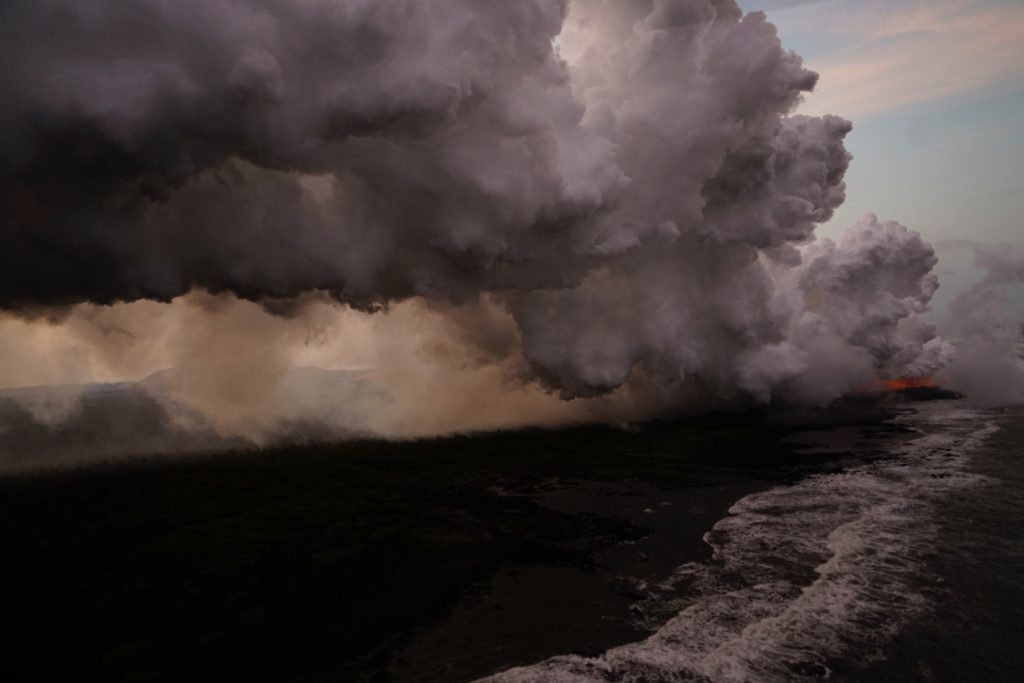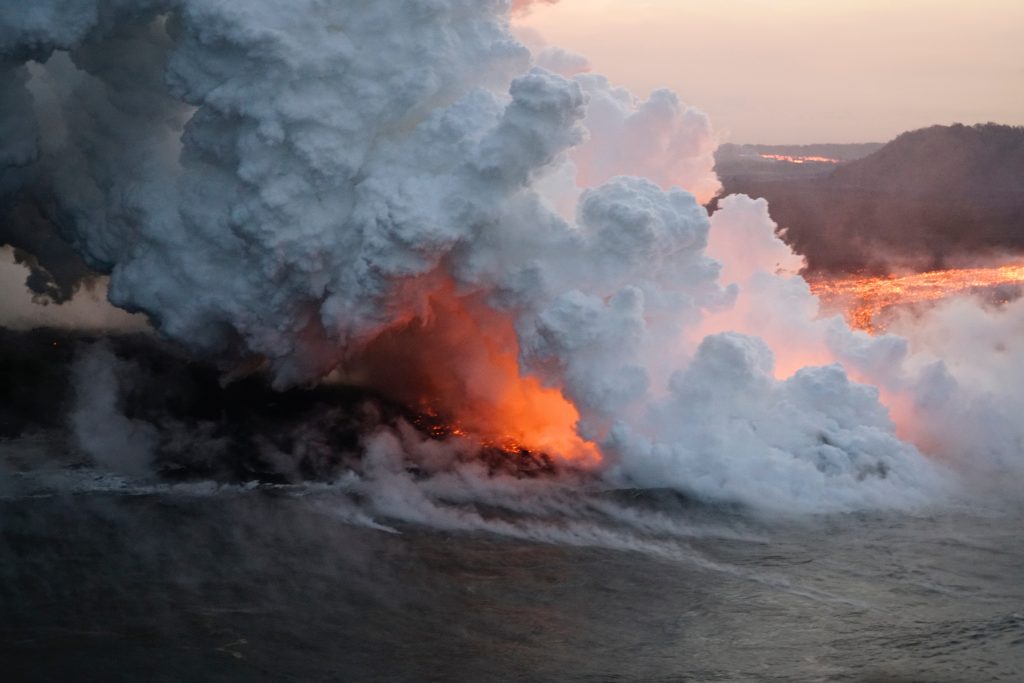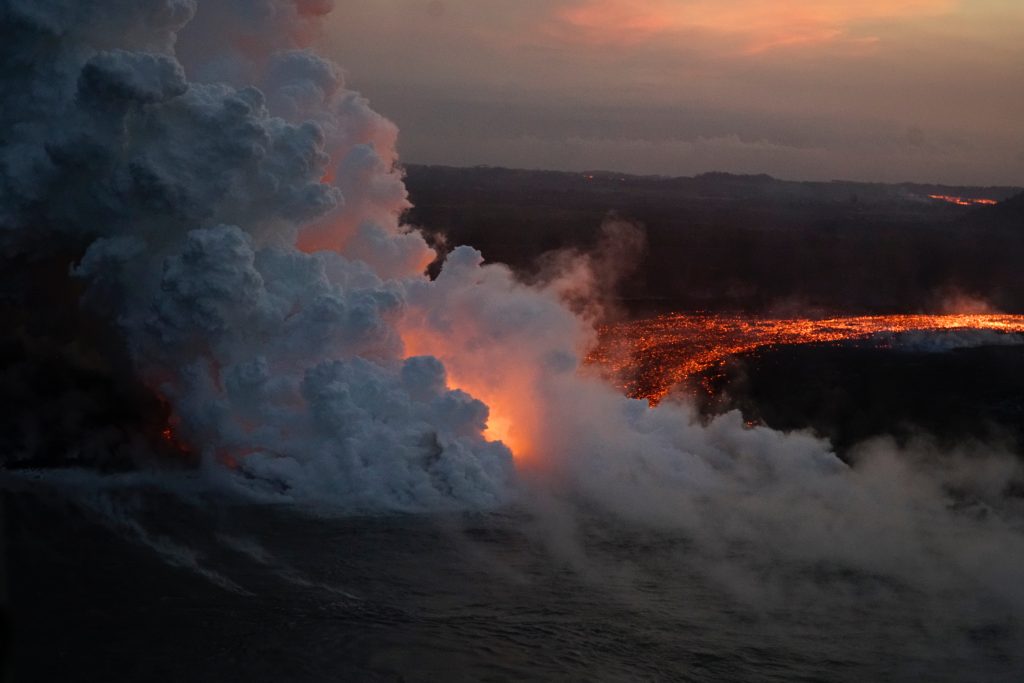VIDEO, PHOTOS: Fissure 8 Flow
Click here for video of the Fissure 8 flow by Hawai‘i National Guard, Tech. Sgt. Andrew Jackson.
This footage and photos of the Fissure 8 flow were part of a Hawaii Army National Guard survey of the Kīlauea eruption.
The video begins at Fissure 8, which has developed a sizable cone around it and is sending channelized lava down to Kapoho Bay.
The lava river is at times well over 100 feet across and is moving quickly.
The U.S. Geological Survey and the University of Hawai‘i at Hilo are working together on research of this eruption, using lava samples from the field.
“The first time anybody is trying to do this, to really look at the chemistry at the same time the volcano is erupting,” UH Hilo Volcanologist Cheryl Gansecki. “We can do a really quick chemical analysis, we can look for tracers that tell us if anything is changing in the magma, in the system, and get that information back to HVO right away, usually within hours, or at least a day.”
A new type of lava that is more fluid and can travel longer distances was identified through this chemical analysis.
“The new lava also includes visible olivine crystals, though they are very small,” Gansecki said. “Some … are starting to look like the olivine crystals seen in the summit lava lake before it drained away, so at this point, we may be starting to see summit magma arriving in the system. So that is something we will be checking for. The lava compositions overall aren’t exactly the same as Puʻu ʻŌʻō or summit lava, but we don’t really expect them to be. They’re traveling 45 kilometers [28 miles] through the rift, where they’re going to cool, they’re going to mix with all the stuff in the stuff that is stored in rift zone and come out looking a little bit different in the end.”
RELATED LINKS: Community Comes Together to Build Tiny Homes for Puna Evacuees



